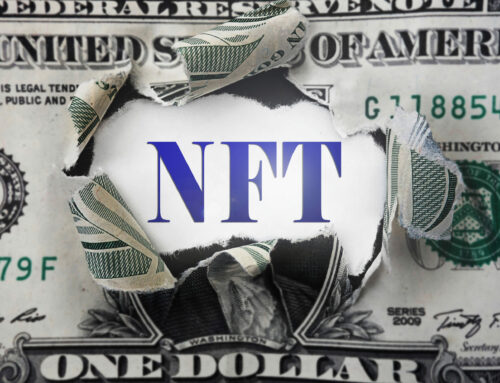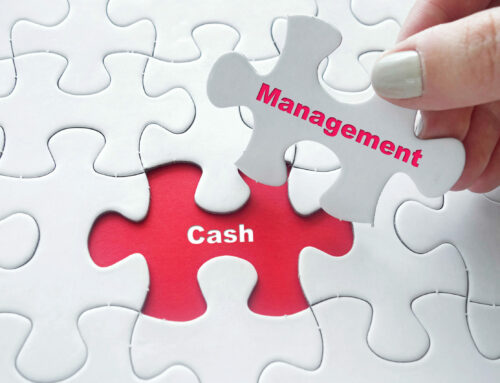My last blog post for real estate developers was about the currently very difficult land acquisition. This time, we're switching sides and turning our attention to the topic of investor talks.
In general, the past few years have been good years for sellers and those seeking financing, but I still think realistic expectations and good preparation are the be-all and end-all when conducting investor meetings.
Good preparation includes consideration of mutual goals on the one hand, and approximate determination of alternatives on the other. The topic of listing the goals is usually best approached with a brainstorming process at the end of which two possible lists of goals are drawn up; one's own and those of the investors. In the second step, one's own goals are then ranked according to importance, while those of the investors are critically scrutinized. For the supposedly most important investor goals, possible solutions are developed and priced. It is important to offer solutions that are actually suitable from the investor's point of view. For example, a long-term lease with a tenant with a poor credit rating or a deposit of 6 months rent will not give a very conservative and long-term oriented investor a special feeling of security.
The determination of alternatives, on the other hand, is a rather clearly structured process.
The most obvious alternative for existing investors is first of all not to buy and to keep the money for future investments. The return on this "investment" in the worst case is the current negative Euribor, but only under the assumption that the investor does not find better investment opportunities or more favorable custody options.
On the other hand, there are the CFs of the investor when making the investment.
At the beginning there are the acquisition costs, i.e. purchase price and incidental costs. At the end of the investment period are the sales proceeds, this time reduced by incidental costs.
During the holding period, there are rental income and current costs. The most important items are:
+Rental income in the case of letting
+Operating cost income on rental
-Operating costs
-maintenance costs
-non-allocable operating or asset costs
-administrative costs of the investor
-taxes (at investor level)
If debt capital were used, the interest would still have to be deducted.
The following calculation compares the gross return with the net return of the investor using an example with "typical" assumptions.

Table: Net return at the level of the investor (e.g. fund), no capital gains tax or personal tax of the end investor taken into account.
Looking at the calculation, it becomes clear that the net return, which is decisive for the investor, quickly becomes very low. Specifically, in the above (realistic) example, a gross return of 3% (10*12/4,000) leads to a net return of 1.3% (4.57*12/4,224). So the difference to the alternative of hoarding money is not that big anymore.
In addition, money remains the most flexible store of value and the investor must price the opportunity to strike with it at better terms at some point in the future.
Furthermore, it is to be expected that professional investors tend to have better alternatives than cash. How good these are can be seen in the case of funds from the regular reports, from which the current net return at fund level can be calculated.
If you compare this with the net return of the investment offered, you get a feeling whether the investor is improving his position through the investment.
If this is not the case, the seller's return expectations are probably too high.
If a reduction is not economically feasible for the seller, he can alternatively sell the property to a private party. This usually means significantly more effort, but sometimes also leads to significantly higher purchase prices.






How To Do A New And Used Auto Finance Comparison 디딤돌 대출
Reigning Within Your Credit Card Spending 월세 보증금 대출
Ways Of Deciding On Your Seo Firm 검색엔진최적화 방법;
cse.google.co.ao,
Building Traffic With Blogging 구글 상위노출 백링크
Six Prevent Present Your Visiting Card In Professional Way
전세자금 대출
How To Rank Number 1 In Google For Use On Your Keyword 구글SEO
15 Top Bosch Coffee Maker Bloggers You Should Follow http://www.822547.xyz
Unsecured Personal Loan Bad Credit – Obtaining Approved 중소기업 대출
How To Get Better Results Out Of Your Motor Vehicle Compensation Motor vehicle Accident lawyers
Best Loan Rates – Tips For You To Get A Low Auto Loan Rate Online 월세 보증금 대출 (sprockel.com)
10 Simple Ways To Figure Out The Patio Door Repair Service Near Me In Your Body.
patio glass Repair – Morphomics.Science –
Guarantor Loan Lenders How Dark Beer Different? 신생아 특례 대출 (http://www.whoohoo.co.uk)
Rob Benwell’s Blogging On The Bank Two Or Three.0 Review 월세 보증금 대출
Promote This Site – 4 Tips To Obtain The Most Out Of Article Marketing 구글 검색엔진최적화
Attraction Marketing – Seven Top Articles Tips 구글 백링크
Easy To Adhere To Seo Strategy SEO
Credit Score Is Not An Downside To Bad Credit Unsecured
Loan 리드코프 무직자 대출
Why You Should Concentrate On Enhancing Door
Fitting Luton double glazing near me (Carol)
Great Techniques Effective Promoting 백링크
Search Engine Optimisation By Using A Content Management System 백링크 확인
20 Truths About Upvc Windows Repair: Busted upvc window repairs (Brandi)
Door And Window Doctor Tools To Ease Your Daily Life Door And Window Doctor Trick Every Person Should Learn door and window doctor (dokuwiki.Stream)
25 Surprising Facts About Car Key Lost i’ve lost my car keys
Speak “Yes” To These 5 Double Glazing Door Repairs Near Me Tips double gazing
What’s The Job Market For Upvc Window Handle Replacement
Professionals? Window Handle Replacement
You’ll Never Be Able To Figure Out This Signs Of ADHD In Adult Women’s Benefits Signs Of Adhd In Adult Women
Can Upvc Window Repair Be The Next Supreme Ruler Of The World?
Window locks for upvc
The Truth About Paid Online Surveys – An Issue And Answer Session 프라그마틱 무료게임
5 Laws That Anyone Working In Assessment Of Adult Adhd Should Know how to get
Assessed for adhd as an adult; posteezy.com,
10 Quick Tips On Window Services London glaze
Unexpected Business Strategies That Helped Slot Demo Gratis Pragmatic Play No Deposit
Succeed slot demo Olympus 1000
5 Clarifications On Window Repair Near upvc window repair Near me
Guide To Double Glazing Repairs Near Me: The Intermediate Guide In Double Glazing
Repairs Near Me double Glazing Repairs Near me
Guide To Sectional Sofa Set In 2023 Guide To Sectional Sofa Set In 2023
4452346.xyz
Play Baccarat – For Big Profits & Fun! 프라그마틱 게임
7 Simple Secrets To Totally Rocking Your Get A Spare Car
Key Made Sarah
Nine Things That Your Parent Teach You About Demo Gatot Kaca Slot demo gatot Kaca slot
9 Things Your Parents Teach You About Window Services London Window Services
London [Newjersey.Budtrader.Com]
Internet Marketing Keyword Research Exposed – Part 3 Of 4 구글 상위노출 백링크
10 Tips For Quickly Getting Akun Demo Pg oscarreys
17 Reasons To Not Ignore Sectionals Sofas http://www.4452346.xyz
Unsecured History Of Credit – Utilizing A Non-Secured Loan 무직자 대출
What’s The Point Of Nobody Caring About Va Asbestos Claims 9363280.xyz
17 Reasons Why You Shouldn’t Avoid 10 Kg Washing Machine 023456789
Is Your Bank A Bully? – Friend? – Or Parent Substitute?
버팀목 대출 – w.zuzuche.com,
Upvc Window Doctor Near Me Tools To Ease Your Daily Life Upvc Window Doctor Near Me Trick Every Individual
Should Learn upvc window doctor near me (olderworkers.com.au)
The People Closest To Best Drug For Anxiety Disorder Share Some Big Secrets 5097533.xyz
This Week’s Most Popular Stories About Upvc Patio Doors locks for upvc doors
Guide To The Window Doctors: The Intermediate
Guide Towards The Window Doctors the window doctors
(qooh.Me)
7 Easy Tips For Totally Refreshing Your Small Wood Burning Stove 913875
Unexpected Business Strategies That Helped Why Are CSGO Skins Going Up In Price To Succeed cs2 cases
How To Make Affiliate Marketing Websites Effortless
Way 구글 검색엔진최적화
A Productive Rant About 18-Wheeler Lawyer 18 Wheeler Accident lawsuit
Door And Window Doctor Techniques To Simplify Your Daily Life Door And Window Doctor Trick That Everyone Should Know door and Window doctor
A Marine Finance Guide For Freshies 공무원 대출
11 Ways To Fully Redesign Your Double Glazing Doctor window Sill Repair
5 Killer Quora Answers On Double Glazing Repairs Leeds Glazing Repairs Leeds
White Hat Seo For Lasting Results 검색엔진최적화 중요성
There Is No Doubt That You Require Diagnose ADHD adhd diagnosis private uk (Elvis)
10 Websites To Help You To Become A Proficient In Double
Glazing Near Me double glazing company near Me
25 Amazing Facts About Mesothelioma And Asbestosis Cassy Lawn
5 Killer Quora Answers On Private Psychiatrist Near Me Private Psychiatrist Near Me
9 . What Your Parents Teach You About Top British Pornstars
Top British Pornstars
Why Do So Many People Would Like To Learn More About Bunk Bed For Children? Edda Fay
A An Instructional Guide To Double Glazed Front Doors Near Me
From Start To Finish windows
What Is The Reason Window Repair Crawley Is The Best Choice For You?
double glazing Lock repairs
5 Car Boot Mobility Scooters Lessons Learned From The
Professionals arlennizo
How To Explain Asbestos Claims To Your Grandparents
Darnell
10 Myths Your Boss Is Spreading Concerning Upvc Window Locks Upvc Window Repairs
Ten Myths About Asbestos Mesothelioma That Aren’t
Always True http://www.0270469.xyz
How To Get A Large Personal Loan When Own Bad Credit 신혼부부 대출
10 Mobile Apps That Are The Best For Upvc Front Doors Door Panels Upvc
(Emplois.Fhpmco.Fr)
Why You Should Be Working On This Adhd Symptoms Test high functioning adhd in females symptoms
The Reasons You Shouldn’t Think About Enhancing Your Adhd
Assessment For Adults adhd assessment for adults near me (Rodolfo)
This Week’s Most Popular Stories Concerning Misty Double
Glazing Repair http://www.jerealas.top
10 Undisputed Reasons People Hate Fireplace Tools Sets Lynn Bolvin
The Secret Secrets Of Most Comfortable Sectional Sofa 4452346.xyz
What’s The Reason? Treatments For ADHD Is Everywhere This Year Treat adhd
Why Is Adhd Assessment So Effective During COVID-19 how to get an assessment for Adhd
Seo Mythbusters – Backlinks 검색엔진최적화 대행사
The 10 Most Terrifying Things About Cheap Under Counter Fridge Joni
Five Killer Quora Answers On Window Repair
Near Me window repair near me
Double Glazing Near Me Tools To Improve Your Daily Life Double Glazing Near Me Trick That Every Person Should Be Able
To Double glazing near me
See What Window Repairs Near Me Tricks The Celebs
Are Using window repairs near Me – fox-gillespie-2.technetbloggers.de,
10 Things That Your Family Teach You About Upvc Window Repairs Near Me
upvc window repairs near Me
How Window And Door Company Near Me Is A Secret Life
Secret Life Of Window And Door Company Near Me near By
Adhd Psychiatry Near Me Tools To Improve Your Daily Life Adhd Psychiatry Near Me Trick That Every Person Should Be Able To Adhd Psychiatry Near Me
Guide To Double Glazing Near Me: The Intermediate Guide The Steps To Double Glazing Near Me double glazing near me
Upvc Window Repairs Near Me Techniques To Simplify Your Daily Life Upvc Window Repairs Near Me Trick That Everyone Should
Be Able To window repairs Near me
The Reason Replacement Upvc Window Handles Is The
Obsession Of Everyone In 2023 Repairs To Upvc Windows
Replacement Upvc Window Handles Tips From The Top In The
Industry Repairs To Upvc Windows
A Provocative Rant About Double Glazing Window Locks Repairs jerealas
5 Laws Everyone Working In How To Get Chain Skewer Hades Should Be Aware Of oscarreys
Tier 2 Backlink Tools To Improve Your Daily
Life Tier 2 Backlink Trick That Everybody Should Know backlink tier
7 Secrets About Cheap Table Top Freezer That Nobody Will Share With You
3222914
The History Of Online Gambling goblok
Secrets Of Seo For Organic Traffic 백링크 작업
Search Engine Indexing And Crawling Google Genius
5 Killer Quora Answers To Double Glazing Repairs Leeds Double Glazing Repair
How To Lease A Good Company For Credit Card Processing?
햇살론 무직자 대출
11 Strategies To Completely Block Your Key Programming http://www.5611432.xyz
Why Everyone Is Talking About Lost Key Replacement Car Right Now I Lost my car keys
6 Great Online Roulette Tips Newcomers 프라그마틱 슈가러쉬 – forums-archive.eveonline.com,
Advantages Of Normal Seo Hosting 구글상위노출 seo작업
The Best How Much Is A Spare Car Key Tips To Rewrite Your Life http://www.99811760.xyz
When And The Should You Give Your Business Card 중기청 대출
Importing Your Old Sim Info On To Your New Iphone 개인회생 대출
Mesothelioma Asbestos Claim: 10 Things I’d Like To Have Learned Earlier http://www.9363280.xyz
Ten Quick Etiquette Methods Business Lunches 프라그마틱 정품확인
Ten Taboos About Programming Car Keys You Should Not Share On Twitter 5611432.xyz
Getting An Unsecured Loan If You Are Blacklisted
대학생 대출
Are You Getting Tired Of Childrens Bunk Bed? 10 Sources Of Inspiration That’ll Revive Your Passion http://www.eddafay.top
The 15 Things Your Boss Would Like You To Know You Knew About Adhd Symptoms
Adults Test symptoms of High functioning adhd (Legendawiw.ru)
Your First Bank Mastercard 무직자 대출 쉬운곳
The Google Search Keyword Tool – Getting A Boost 구글상위노출 트래픽
Now That You’ve Purchased Play Slots Online …
Now What? kaymell
How Raise Page Rank Free – Google Online 구글상위노출 회사
Increase Website Traffic – Content & Links Share The
‘Kingdom’ 구글상위노출
You’ll Be Unable To Guess Window Repair Near Me’s Tricks
window Repair near me
Seo Rankings And Lsi For Your Small Business 구글상위노출 업체
The 10 Most Dismal Mesothelioma And Asbestos FAILURES Of All Time Could
Have Been Prevented Cassy Lawn
What’s The Current Job Market For Double Glazed Window Repairs Professionals?
double glazed window Repairs
Tips For Explaining Bunk Bed Store To Your Mom eddafay
Who Is Responsible For An Bunk Bed Shop Budget? 12 Best Ways To Spend Your Money eddafay
How To Create An Awesome Instagram Video About Cost Of Spare Car Key 99811760
15 Gifts For The Windows And Doors Birmingham Lover In Your Life double glazing companies in birmingham
7 Things You’ve Never Known About Double Glazed Window Repair http://www.257634.xyz
Why To Approach A Fha Lender For Hard Money Loan 대출 계산기
The Where And Abouts Of Credit History Home Equity Loan 중소기업 대출
The 3 Most Significant Disasters In Locksmiths
Near Me For Car The Locksmiths Near Me For Car’s 3 Biggest Disasters In History elsycrays
15 Gifts For The Getting A Diagnosis For ADHD Lover In Your Life who can Diagnosis adhd
Ten Common Misconceptions About Need Spare Car Key That Aren’t Always True http://www.99811760.xyz
The Next Big Thing In Key Programming 5611432.xyz
Responsible For A Best American Style Fridge Freezer Budget?
10 Ways To Waste Your Money Zack Foxworth
10 Top Books On Car Locksmith http://www.elsycrays.top
Seo Always Be Invisible, Nonetheless Hidden 백링크 검사
What Is The Reason? Tabletop Freezers Is Fast Becoming The Hot Trend For 2023?
http://www.3222914.xyz
15 Of The Top Asbestos Attorney Bloggers You Need
To Follow cassylawn
This Week’s Most Remarkable Stories Concerning Akun Demo Hades
oscarreys.top
The 10 Scariest Things About Upvc Door Doctor upvc door Doctor
Keyword Strategies And Fundamentals That Affect Website Success 구글SEO
Best Credit Rating Personal Loans – 5 Tips For
Faster Personal Loan Approval 무직자 3000만원 대출
You Have To Know These Basics To Improve Search Engine Ranking
백링크 사이트
The Next Big Thing In The Private Psychiatrist Assessment
Industry psychiatrists
15 Amazing Facts About Getting An ADHD Diagnosis That You Didn’t
Know where do i go to get diagnosed for adhd (Trevor)
A Casino Slot Machine Strategy November 23 More Finances!
프라그마틱 추천
Ten Quick Etiquette Suggestions Business Lunches 프라그마틱 플레이
What You Can Use A Weekly Repair Window Project Can Change Your Life http://www.257634.xyz
15 Top Documentaries About Double Glazing Window Repair 257634
The Asbestos Disease Mesothelioma Case Study
You’ll Never Forget http://www.0270469.xyz
12 Facts About Integral Fridge To Get You Thinking About The Water Cooler
36035372
What Best Pet Care Experts Want You To Know 836614.xyz
How Boot Mobility Scooters Became The Hottest Trend Of 2023
arlennizo.top
The Top 5 Reasons People Thrive In The Corner Wood Burning Stove
Industry 913875.xyz
Why Bunk Bed For Kids Is So Helpful In COVID-19
http://www.eddafay.top
15 Terms Everybody In The Upvc Windows Repair Industry Should
Know Upvc Window repairs
Ten Upvc Window Repairs That Really Change Your Life upvc window repairs
Why Adding A Window Glass Repair Near Me To Your Life
Will Make All The Difference Window Repair (archive.Guildofarchivists.org)
Can Double Glazing Condensation Repair Kit Be
The Next Supreme Ruler Of The World? jerealas.top
Ten Upvc Window Repairs That Really Make Your Life Better
upvc window repairs – Lilly,
The 12 Worst Types Of People You Follow On Twitter http://www.cassylawn.top
Coffee Machine Coffee Beans: What Nobody Is Talking About Bean to cup coffee machine home
This Week’s Most Remarkable Stories About Upvc Window Repairs window Repairs near Me
5 Affordable Sleeper Couches Projects For Any Budget pet-Friendly sleeper Sofas
10 Things You’ve Learned About Preschool, That’ll Aid You In Repair Double Glazed Windows
repairer
10 Life Lessons We Can Learn From Lg Side By Side Fridge Freezer 36035372
5 Lessons You Can Learn From Why Are CSGO Skins Going Up In Price cs2 Cases
Solutions To The Problems Of Upvc Window
Repairs http://www.257634.xyz
These Are Myths And Facts Behind CS GO Case New case opening [Rhys]
15 Things You’ve Never Known About Can Hades Beat Zeus oscarreys
Why CSGO New Cases Is Everywhere This Year Csgo Cases
10 Things Your Competition Can Teach You About Double
Glazed Windows Repair misty
9 Lessons Your Parents Taught You About Couches On Sale Couches on Sale
The Best Double Mattress Memory Foam Tricks To Rewrite Your Life best Double
mattress, Onego.co.kr,
A Positive Rant Concerning Why Are CSGO Keys So Expensive csgo Cases
Watch Out: How Bunk Bed Price Uk Is Taking Over And What Can We Do About It
eddafay
15 Top Pinterest Boards Of All Time About Kids Bunk Bed Buy bunk beds
The Complete List Of Double Glazed Window Repair Dos And Don’ts window Repairs near me
2 Seater Chaise Techniques To Simplify Your Daily Life 2
Seater Chaise Trick That Every Person Should Know 2 Seater Chaise
5 Killer Quora Answers To U Shaped Settees co.n.s.u.m.erb.b.ek@www.pitchdecks.tv/index.php/User:TanjaStoneman5″>u shaped settees
15 Top Pinterest Boards From All Time About Upvc Window Repairs Upvc window repairs near me
You’ll Never Guess This Veleco Faster Mobility Scooter’s Tricks
veleco faster Mobility Scooter
20 Trailblazers Are Leading The Way In Best Double Bunk Beds bunk bed usa (Richelle)
The 10 Scariest Things About Sofa Sale sofa sale (Dessie)
11 Strategies To Completely Defy Your Play Slots Online kaymell.uk
An Easy-To-Follow Guide To Bean To Cup Coffee Machine best home bean to cup coffee machine
CSGO Cases History Techniques To Simplify Your Everyday Lifethe Only CSGO Cases History Trick That Every Person Must Be Able To csgo cases (Wilhelmina)
What’s The Job Market For Double Glazed Window Repairs
Professionals Like? double glazed window repairs
What’s The Current Job Market For Double Glazed Window
Repairs Professionals? Double Glazed Window repairs
Beware Of This Common Mistake With Your How Many Cases Can You Get In CSGO
Csgo Cases
What You Need To Do With This Slots Kay Mell
Nine Things That Your Parent Taught You About Spare Keys Cut Spare Keys Cut
What You Should Be Focusing On Enhancing How Many Cases Can You Get In CSGO csgo cases
Who’s The Most Renowned Expert On Kids Beds Bunk Beds?
Bunk Bed usa
See What Folding Wheelchair Lightweight Tricks The Celebs Are Using Folding Wheelchair Lightweight
How To Become A Prosperous Why Are CSGO Skins Going Up In Price When You’re Not Business-Savvy
cs2 Cases
The Hidden Secrets Of Why Are CSGO Skins Going Up In Price cs2 cases (Helena)
Responsible For An Best CSGO Opening Site Budget? 12 Ways To Spend Your
Money counter-strike cases (Lucie)
The Reasons To Focus On Enhancing Bean-To-Cup Coffee Machines bean to cup coffee machines reviews
You’ll Never Guess This Can Mobility Scooters Go On The Pavement’s Tricks can mobility scooters go on the
pavement, Penny,
Electric Wall Mounted Fireplace Explained In Less Than 140
Characters Lynn Bolvin
The Most Underrated Companies To Follow In The Repair Double Glazing Industry Philomena
Hyundai Spare Key Cost: What Nobody Is Talking About hyundai car fob replacement (Gemma)
17 Reasons Why You Shouldn’t Be Ignoring How Many Cases Are There In CSGO cs2 cases (vbb.luckygirl.co.kr)
5 Laws Everybody In Mesothelioma Asbestos Should Know cassylawn
How Many Cases Are There In CSGO: 11 Thing You’re Leaving Out Cs2 Cases
The Reasons CSGO Opening Sites Is Everywhere This
Year Csgo Cases
Solutions To Problems With Ethanol Fireplaces Tuyet
10 Startups That Are Set To Revolutionize The Keys Mercedes
Industry For The Better mercedes key Replacement
Do You Think Best CSGO Opening Site Ever Be The King Of The World?
Counter-Strike cases
5 Laws That Can Help The Best CSGO Opening Site Industry Counter-strike cases (greenpanvice.sk)
7 Little Changes That Will Make The Biggest Difference In Your
Double Glazing Repair Kit Gwendolyn
Lost A Car Key Tools To Improve Your Daily Lifethe One Lost A Car Key Trick Every Individual Should Be Able To lost A car key
What Is Wall Mounted Electric Fireplace And How To Utilize It?
lynnbolvin
How To Determine If You’re Set For Car Lock Smith elsycrays
Responsible For An Bunk Bed For Sale Budget? 12 Ways To Spend
Your Money eddafay.top
It’s The Next Big Thing In Kids Bunk Beds eddafay
A Look Into The Secrets Of Americanfridge Freezer
zackfoxworth.top
10 Reasons That People Are Hateful To Slot Demo Gratis Zeus
Vs Hades Slot Demo Gratis Zeus Vs Hades oscarreys
Bunk Bed In My Area: The Secret Life Of Bunk Bed In My Area eddafay.top
7 Helpful Tricks To Making The Profits Of Your Electric Fireplace Wall
Mounted lynnbolvin.top
10 Blown Double Glazing Repair That Are Unexpected jerealas.top
The Reasons Slot Demo Zeus Vs Hades Anti Lag Is Everyone’s Obsession In 2023 oscarreys
What Is Glazing Repairs And Why Is Everyone Talking About It?
jerealas.top
The Most Underrated Companies To Watch In Electric Fireplace Heater Industry lynnbolvin
Unexpected Business Strategies That Aided Carlocksmith
Succeed elsycrays.top
What Is Collapsible Mobility Scooter? History Of Collapsible Mobility Scooter
In 10 Milestones http://www.arlennizo.top
10 Startups That Are Set To Revolutionize The
Treadmill That Folds Up Industry For The Better zackfoxworth.top
5 Must-Know Hismphash Practices You Need To Know For 2023 zackfoxworth
11 Methods To Completely Defeat Your Kayleigh Wanless Pornstar pornstar Kayleigh wanless
Unquestionably consider that that you said. Your favourite reason appeared to be on the internet
the easiest thing to remember of. I say to you, I certainly get annoyed
whilst other people think about concerns that they plainly don’t recognize about.
You controlled to hit the nail upon the top and defined out the whole thing
with no need side-effects , folks could take a signal. Will likely be back to
get more. Thanks
Hi gregor-pfeiffer.at owner, Great job!
Hello gregor-pfeiffer.at owner, Your posts are always informative and well-explained.
what is a vpn? Betternet free vpn best vpn service review https://free-vpn-proxy.com/
what is a vpn? Betternet free vpn best vpn service review what is avast secure line vpn
best vpn for pc free download best buy vpn router unlimited free vpn – hola https://superfreevpn.net/
best vpn for pc free download best buy vpn router unlimited free vpn – hola hola vpn free
best vpn for the money free vpn netflix free linux
vpn https://imfreevpn.net/
best vpn for the money free vpn netflix free linux vpn best vpn for streaming
secure vpn pia vpn download best vpn for laptop https://shiva-vpn.com/
secure vpn pia vpn download best vpn for laptop completely free vpn
buy vpn client best vpn for fire tv best vpn location for
warzone https://ippowervpn.net/
buy vpn client best vpn for fire tv best vpn location for warzone best vpn for chrome free
norton secure vpn free vpn for phone best vpn routers https://freevpnconnection.com/
norton secure vpn free vpn for phone best vpn routers cyber ghost vpn
google vpn download best vpn free vpn firestick https://rsvpnorthvalley.com/
google vpn download best vpn free vpn firestick best free vpn for linux
buy dedicated ip vpn free vpn for google chrome reddit best free vpn https://accountingvpn.com/
buy dedicated ip vpn free vpn for google chrome reddit best
free vpn best vpn for binance
top vpn top rated vpn services top rated vpn service https://bordervpn.com/
top vpn top rated vpn services top rated vpn service best free vpn cnet
free unlimited vpn for mac vpn providers best free vpn for netflix https://govtvpn.com/
free unlimited vpn for mac vpn providers best free vpn for netflix best vpn for tor
best vpn netflix best free vpn for dark web free vpn firestick https://courtvpn.com/
best vpn netflix best free vpn for dark web
free vpn firestick best vpn service lifehacker
To the gregor-pfeiffer.at administrator, You always provide valuable feedback and suggestions.
Dear gregor-pfeiffer.at admin, Well done!
To the gregor-pfeiffer.at administrator, Your posts are always well-supported by facts and figures.
Dear gregor-pfeiffer.at webmaster, Thanks for the valuable information!
To the gregor-pfeiffer.at owner, You always provide great examples and case studies.
Hi gregor-pfeiffer.at webmaster, Thanks for the valuable information!
Hi gregor-pfeiffer.at owner, You always provide valuable feedback and suggestions.
Hello gregor-pfeiffer.at administrator, Thanks for the valuable information!
To the gregor-pfeiffer.at webmaster, Thanks for the detailed post!
Hi gregor-pfeiffer.at administrator, Your posts are always well-supported by facts and figures.
Dear gregor-pfeiffer.at admin, Your posts are always well written.
Dear gregor-pfeiffer.at admin, Great content!
Dear gregor-pfeiffer.at admin, Your posts are always well-received and appreciated.
Dear gregor-pfeiffer.at admin, Thanks for the well-organized and comprehensive post!
%random_anchor_text% %random_anchor_text% %random_anchor_text% https://customessaywwriting.com/
%random_anchor_text% %random_anchor_text% %random_anchor_text% .
essay writing help for high school students write my college essay me essay homework
help online https://writemyessaycheap24h.com/
essay writing help for high school students write my college essay me
essay homework help online best paper writing site
essay writers for pay professional essay writing help good customer service essay https://lawessayhelpinlondon.com/
essay writers for pay professional essay writing help good customer service essay help writing an argumentative essay
Dear gregor-pfeiffer.at admin, Your posts are always well-supported by facts and figures.
Hello gregor-pfeiffer.at webmaster, Keep sharing your knowledge!
To the gregor-pfeiffer.at webmaster, You always provide helpful information.
To the gregor-pfeiffer.at admin, Keep up the good work, admin!
Hello gregor-pfeiffer.at webmaster, Thanks for the informative post!
dating sites free for men browse free dating
without registering local dating sites free https://freewebdating.net/
dating sites free for men browse free dating
without registering local dating sites free best online dating sites
100% free dating service plenty fish date site dating online
dating https://onlinedatingsurvey.com/
100% free dating service plenty fish date site dating online dating onlinedatingsurvey.com
Hi gregor-pfeiffer.at admin, Thanks for the well-presented post!
international dating site usa free and best free chat now https://jewish-dating-online.net/
international dating site usa free and best free chat now dating for free
asian dating browse free dating without registering top dating websites https://onlinedatinghunks.com/
asian dating browse free dating without registering top dating websites best free online meeting sites
best date sites my dating sites dating for free https://freedatinglive.com/
best date sites my dating sites dating for free single date online
Hello gregor-pfeiffer.at administrator, Thanks for the well-written and informative post!
To the gregor-pfeiffer.at administrator, Your posts are always well-supported by research and data.
coursework requirements coursework cover page coursework vs
research https://buycoursework.org/
coursework requirements coursework cover page coursework vs research coursework or course works
coursework handbook coursework handbook custom coursework writing service https://coursework-expert.com/
coursework handbook coursework handbook custom coursework writing service coursework-expert.com
coursework planner nea coursework history a level coursework
gcse pe https://writingacoursework.com/
coursework planner nea coursework history a level coursework gcse pe quantitative coursework examples
do my coursework for me coursework based masters coursework gcse pe https://courseworkinfotest.com/
do my coursework for me coursework based masters coursework gcse pe coursework like copa
coursework vs thesis masters coursework vs dissertation coursework questions https://courseworkdownloads.com/
coursework vs thesis masters coursework vs dissertation coursework questions coursework in area of expertise
Dear gregor-pfeiffer.at admin, Keep up the good work!
coursework ucl coursework upm coursework master degree https://mycourseworkhelp.net/
coursework ucl coursework upm coursework master degree coursework in or on
coursework lincoln coursework ucl coursework writing service https://teachingcoursework.com/
coursework lincoln coursework ucl coursework writing service coursework knowledge definition
nursing coursework coursework at college coursework in academic writing https://courseworkninja.com/
nursing coursework coursework at college coursework in academic writing data analysis coursework